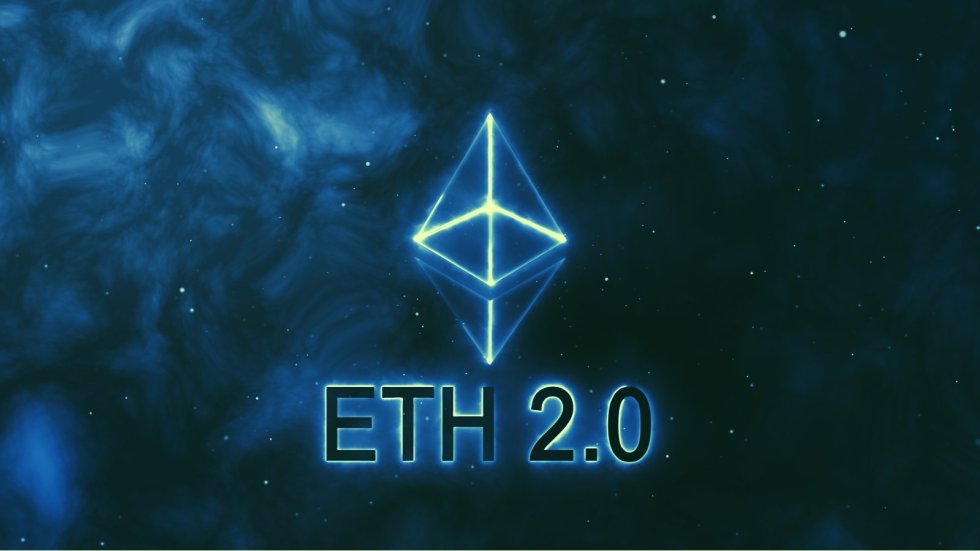ETH 2.0 is being heralded as Ethereum’s blockchain Messiah. Here’s the thing: it isn’t. The long-awaited modifications are unlikely to address the network’s basic problems, which are preventing wider adoption.
ETH 2.0 Isn’t All That
To address long-standing concerns with Ethereum, Ethereum’s administrators announced the launch of Eth 2.0 as a set of improvements to its current model, including a switch to proof-of-stake (PoS) and sharding. People can mine blocks and validate transactions based on how many coins they own, according to the proof-of-stake idea. The Ethereum Foundation has stated that the transition to PoS will be completed by the end of 2021. In a recent blog post, the Ethereum Foundation highlighted that “the energy needs remain unchanged” as compared to the old PoW algorithm.
In a recent interview with Forkast news, Vitalik Buterin, the brilliant mind behind the Ethereum blockchain, indicated that the employees working with Ethereum is a greater challenge than the actual platform. While the project’s people may or may not be troublesome, it is certainly not the only flaw. As appealing as the new rollout may appear, the software updates that will be implemented will not address the network’s long-term issues that have prevented it from reaching the heights that Buterin and his followers had envisioned.
Ethereum currently uses a proof-of-work (PoW) method that allows for only about 15 transactions per second — roughly double the speed of the Bitcoin (BTC) blockchain — and is largely regarded as unfeasible for establishing a large-scale decentralized finance (DeFi) ecosystem. As a result, Ethereum’s gas fees are quite high. Because there are so few transactions per second, the cost of processing faster becomes competitive. According to Dune Analytics, 2-5 percent of transactions on Ethereum-based decentralized exchanges (DEXs) failed owing to issues such as low gas pricing.
Poor user experience (UX) design is another major issue that the Ethereum platform confronts, yet it is generally overlooked. As a result, most users who might be interested in using decentralized finance applications (DApps) or a nonfungible token (NFT) marketplace, for example, will avoid doing so because most user interfaces are not only unintuitive, but also lack sufficient educational resources to teach users how to use the platform.
Users will be expected to specify transaction fees and gas restrictions for transaction processing in the gas price. How many consumers, though, are aware of this without delving into the depths of cryptocurrency lingo and data? According to Insider Intelligence, 25% of adults in the United States don’t comprehend or know how to invest in digital currencies. Without access to appropriate educational tools, how could users be supposed to know, for example, that making payment from two different wallets to the same receiving address would not result in a nonces conflict? The vast majority of frequent users, in all likelihood, would be completely unaware of such an issue to begin with.
Related article | Cardano Boss Puts Into Words Why ETH 2.0 Will Fall Flat
Upgrades On ETH 2.0 Don’t Help Much
The latest changes are intended to be more environmentally friendly while also speeding up transaction processing. In addition to these enhancements, the blockchain programming language is projected to evolve from the standard Ethereum Virtual Machine (EVM) to one that can be used by developers who use C++ or Rust, making coding directly in a browser easier. While the infrastructure enhancements may be useful in certain ways, such as boosting transaction throughput, they fall short in others.
For starters, Ethereum 2.0 has been under development for years, leaving many users wondering when the entire upgrade will be available. Although proof-of-stake is designed to reduce mining costs and energy consumption, network performance can only be raised if block timings and/or block sizes are reduced. Furthermore, sharding is only useful for apps that can operate independently and only need to sync once in a while. However, because of DeFi’s intrinsic decentralized and open-source nature, sharding-style processing would require transactions to be routed through a relay chain, which would slow down the entire process.
In addition, on the user experience front, Ethereum continues to lag behind to a large extent, which the Eth 2.0 update has yet to address. While Ethereum says that it will release enhancements that would help with transaction processing speeds and high gas fees, the foundation exhibits a clear disregard for concerns that, if handled, would allow a bigger number of users to benefit from Ethereum’s user-friendly interface.
Another issue is that transactions have long confirmation periods, which generally result in delays, asynchronous transaction submission, and confirmation messages, in addition to the persisting gas fee parameter difficulties. Frequently, a user will not receive confirmation immediately after completing a transaction, putting the user in the dark as to whether or not the intended receiver received the transaction. This is a bizarre and frustrating user experience for people who are accustomed to rapid outcomes on the web, such as in e-commerce situations.
Ethereum may be the blockchain world’s sweetheart, but the hoopla may turn out to be little more than hype at some point, and the long-awaited update is unlikely to garner wider popular use. It’s unclear whether the anticipated changes will be able to keep the Ethereum Foundation’s top executives’ pledges. It’s unlikely that Eth 2.0 will make a substantial difference for anyone outside of the Ethereum community unless Ethereum can address some of the larger concerns at hand. For the time being, Ethereum 2.0 is more of a cosmetic tweak than a much-needed game-changer.
Related article | The Top DOGE: Bitcoin And Ethereum Too Slow, Elon Musk
Featured Image from Pixabay, Charts from TradingView
